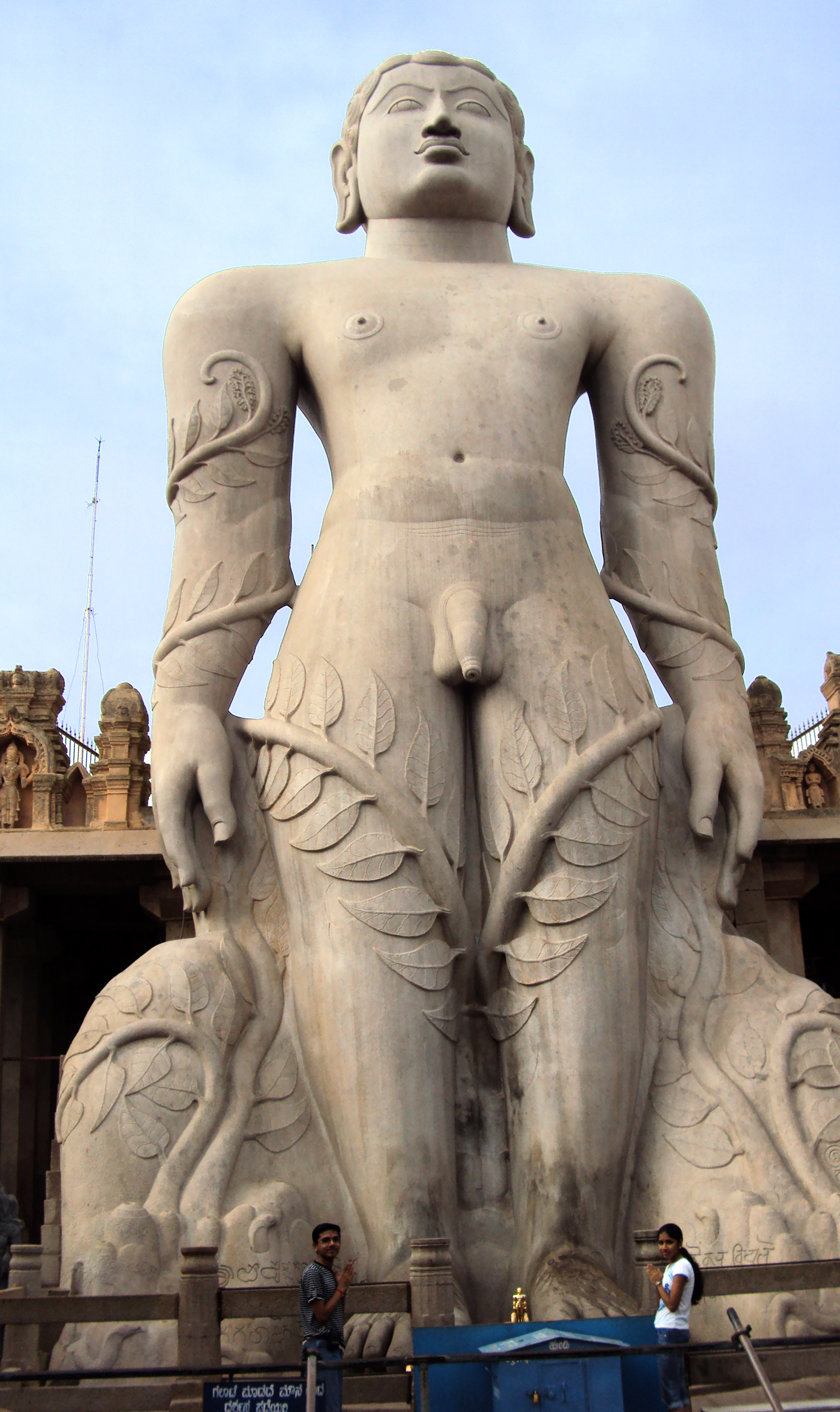Gommateshwara Statue is situated at ShravanaBelagola near Channarayapatna of Hassan district, in Karnataka state. It is one of the most important pilgrimage destinations for Jains. It is also one of the most sought-after places for pilgrims to Karnataka.

Lord Gommateshwara or Lord Bahubali Statue at ShravanaBelagola.
There are two hills at Shravanabelagola, namely Chandragiri and Vindhyagiri. The 58-foot-high monolithic statue of Gommateshwara at Vindhyagiri is the main attraction here. Chandragupta Maurya and his spiritual teacher Bhadrabahu were believed to have meditated in these hills. Chandragiri has many memorials to numerous Jain monks.
Gommateshwara Statue (known as Lord Bahubali to Jains) has inscriptions in Kannada and Marathi, which mention the rise and growth of many dynasties that existed in the region. The inscriptions in Marathi are the oldest proof of written Marathi in Devnagari script, dating back to 981 A.D. These inscriptions relate to the Western Ganga Dynasty (which ruled from 350 to 1000 A.D.), the Rashtrakutas dynasty (ruled between the 6th and 10th centuries), the Hoysala Empire (ruled from 10th to 14th centuries), the Vijayanagar Empire (ruled from 1336 A.D. to 1646 A.D.) and the Wodeyar dynasty (ruled the Kingdom of Mysore from 1399 to 1947).
Mahamastakabhisheka, the main festival, which is a spectacular festival event for the Jains, is held once every twelve years here. The next Mahamastakabhisheka is to be held in 2030. The last was in 2018.
The architectural and sculptural activity peaked in and around ShravanaBelagola during the Western Ganga Dynasty of Talakad. Jainism existed for more than 2,000 years in Shravana Belagola and nearby areas. The great Maurya Emperor, Chandragupta Maurya, was believed to have died here in 298 B.C.
Chandragupta Maurya was the first emperor to unify most of the small states of Southern Asia into a Larger Greater India. His empire spanned from Bengal to Afghanistan and Balochistan to the Deccan Plateau in South India. His empire consisted of most of the current Indian states except Tamil Nadu, Kerala, and North Eastern states of India. Emperor Chandragupta Maurya and his chief adviser, Chanakya, were known for their strong central administration, characterized by their efficient and well-organized bureaucrats. Buddhism and Jainism became increasingly prominent during the time of Chandragupta Maurya, a Jain by faith.
 Silver Coin of Seleucus I, likely depicting a posthumous portrait of Alexander the Great.
Silver Coin of Seleucus I, likely depicting a posthumous portrait of Alexander the Great.
Chandragupta Maurya is known for defeating one of the most powerful emperors of these times, Seleucus I Nicator, the immediate successor to the Great Emperor Alexander. Chandragupta Maurya subsequently married Seleucus’s daughter and established a friendship with the Hellenistic kingdom, which enabled trade relations between India and the Western world.
Chandragupta Maurya’s son, Bindusara, became the King in 298 B.C., on Chandragupta Maurya’s death. Great Emperor Ashoka was the grandson of Chandragupta Maurya (son of Bindusara).
How Do I Go to Lord Gommateshwara or Lord Bahubali Statue?
Shravanabelagola is around 50 kilometers southeast of Hassan’s district capital. Channarayapatna town, the headquarters of the Shravanabelagola legislative constituency, is around 13 kilometers from Shravana Belagola on the Bangalore – Mangalore National Highway, NH 48. Bangalore is around 157 kilometers, Mangalore is 232 kilometers, and Mysore is 83 kilometers from Shravanabelagola.
Accommodation near Gommateshvara Statue Site
Decent accommodation facilities are available to Jain pilgrims near the Gommateshvara Statue site at Shravanabelagola by the Jain Mutt at Vindyananda Yatrinivas. There are other hotels also which offer good accommodation at ShravanaBelagola.
